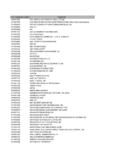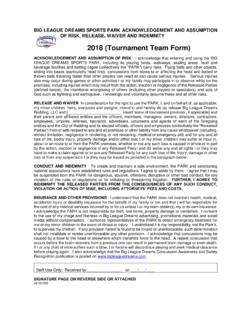Transcription of The Law Journal of the International Trademark Association
1 The Law Journal of the International Trademark Association Embracing Marketplace Realities: Rediscovering Section 18 of the Lanham Act on the Twentieth Anniversary of Its Revival Timothy A. Lemper and Linda K. McLeod Twenty Years of Rogers v. Grimaldi: Balancing the Lanham Act with the First Amendment Rights of Creators of Artistic Works David M. Kelly and Lynn M. Jordan Family Feud: The Tension Between Family Names and Trademarks Christopher P. Bussert The Effect of Consumer Surveys and Actual Confusion Evidence in Trademark Litigation: An Empirical Assessment Dan Sarel and Howard Marmorstein Standing and Joinder Considerations in Trademark Litigation and Licenses Kim J. Landsman, Daniel C. Glazer, and Irene C. Treloar Amicus Brief of the International Trademark Association in Chlo v. Queen Bee of Beverly Hills, LLC. Amicus Brief of the International Trademark Association in Levi Strauss & Co.
2 V. Abercrombie & Fitch Trading Co. Vol. 99 November-December, 2009 No. 6. Vol. 99 TMR 1437. STANDING AND JOINDER CONSIDERATIONS IN. Trademark LITIGATION AND LICENSES. By Kim J. Landsman, Daniel C. Glazer, and Irene C. Treloar . I. INTRODUCTION. Trademark licensees long have had standing to sue for infringement of the licensed mark under Section 43(a) of the Trademark (Lanham) Act. Occasionally, when the license in fact operates more like an assignment, licensees have been allowed to sue under Section 32(1) as if they were the licensor who registered the licensed mark. In some instances, courts even have used such an analysis to provide Trademark licensees with the right to sue for dilution as the owner of a famous licensed mark under Section 43(c). What has received less attention in the reported cases is the issue of joining the licensor as a party to actions instituted by the licensee.
3 That issue deserves more attention because certain Trademark licensors particularly foreign entities seeking to avoid appearing in a legal proceeding may desire to provide their licensees with the right to enforce the licensed mark in the United States to avoiding entanglements in lawsuits. This article first will review the principal reported decisions in which a set of factors have developed that courts used to resolve standing and joinder questions in Trademark litigation. Those factors include the specific statutory claims being asserted, whether the license is exclusive or non-exclusive, the nature of the specific rights that have been granted to the licensee, and the restrictions on the licensee's rights set forth in the license agreement. These cases provide litigators with guidance on how to avoid or overcome procedural hurdles if the client is the claimant, or if the client is the alleged infringer, and how to derail a case (or at least add expense and inconvenience to the other side) by raising issues concerning the absence of parties with an interest in the licensed mark.
4 Mr. Landsman is a partner, Mr. Glazer is counsel, and Ms. Treloar is an associate in the firm of Patterson Belknap Webb & Tyler LLP, New York, New York, Associate Member of the International Trademark Association . The views expressed by the authors herein do not necessarily reflect the views of Patterson Belknap Webb & Tyler LLP or its clients. 1438 Vol. 99 TMR. This article also addresses the implications of standing and joinder rules for transactional lawyers who draft and negotiate Trademark licenses. As the cases described below make clear, it is crucially important to negotiate and carefully delineate the licensor and licensee's respective rights to make decisions about enforcing the licensed mark in the United States, as well as the right to be left out of litigation if the other party to a license brings an infringement or dilution action against potential infringers.
5 II. STANDING. A. Claims Under Lanham Act Section 43(a)(1). Section 43(a)(1) of the Lanham Act provides a cause of action for any person who believes that he or she is likely to be damaged by a party's acts of infringement or unfair The statutory language gives a wide range of plaintiffs standing to maintain a claim. One need not be an owner or registrant of a mark to assert a Section 43(a)(1) The statutory requirement of standing the person's belief that that he or she is likely to be damaged by an infringement . appears quite flexible and open-ended,3 and courts generally have ruled that both non-exclusive and exclusive Trademark licensees have standing to bring claims under Section 43(a)(1) of the Lanham As a user of the infringed mark, a licensee has a 1. See 15 1125(a)(1). 2. See, , Murphy v. Provident Mut. Life Ins. Co., 756 F.
6 Supp. 83, 86 (D. Conn. 1990), aff'd, 923 923 (2d Cir. 1990) (noting that the question of ownership or registration is immaterial to standing under 43(a) since standing may lie with mere users of trademarks). 3. 15 1125(a)(1); see Murphy, 756 F. Supp. at 86; Waits v. Frito Lay, Inc., 978. 1093 (9th Cir. 1992); Shell Co. v. Los Frailes Serv. Station, Inc., 596 F. Supp. 2d 193, 203-04 ( 2008). 4. Non-exclusive licensees. See Quabaug Rubber Co. v. Fabiano Shoe Co., 567 154 (1st Cir. 1977); Trump Plaza of the Palm Beaches Condo. Ass'n, Inc. v. Rosenthal, No. 08-80408-CIV, 2009 WL 1812743, at *8 ( Fla. June 24, 2009). Exclusive licensees. Krasnyi Oktyabr, Inc. v. Trilini Imports, No. CV-05-5359, 2007. WL 1017620, at *3 ( Mar. 30, 2007); Hako-Med USA, Inc. v. Axiom Worldwide, Inc., No. 8:06-CV-1790-T-27, 2006 WL 3755328, at *7 ( Fla. Nov.)
7 14, 2006); Calvin Klein Jeanswear Co. v. Tunnel Trading, No. 98 Civ. 5408, 2001 WL 1456577, at *5 ( Nov. 16, 2001); Norman M. Morris Corp. v. Weinstein, 466 137 (5th Cir. 1972); Gruen Mktg. Corp. v. Benrus Watch Co., 955 F. Supp. 979, 984 ( Ill. 1997); STX, Inc. v. Bauer USA, Inc., No. C 96-1140, 1997 WL 337578 ( Cal. June 5, 1997); Ferrero , Inc. v. Ozak Trading, Inc., 753 F. Supp. 1240 ( 1991), aff'd, 935 1281 (3d Cir. 1991), rev'd in part on other grounds, 952 44 (3d Cir. 1991). Vol. 99 TMR 1439. commercial interest that would be adversely affected by the unauthorized use of the mark in violation of Section 43(a)(1).5. Nevertheless, the reported cases have required more than a mere allegation of belief in likely damage. A plaintiff that is not the registrant or owner of the infringed mark must introduce evidence that it is reasonably likely to suffer competitive or commercial injury as a result of a defendant's unauthorized use of the mark, such as declining sales or loss of A subjective belief of likelihood of injury, without more, is insufficient for a non- registrant or non-owner of a mark to maintain an action under Section 43(a)(1).
8 7. A licensee's right to maintain an action under Section 43(a)(1). can be limited by contract. What is contractually created ( , the right to use the licensed mark and, therefore, standing to sue) can be contractually limited. Following this rationale, courts have held that a Trademark licensee does not have standing to bring a Section 43(a)(1) claim if the applicable license agreement restricts the licensee's ability to bring suit. 8. 5. Shell Co., 596 F. Supp. 2d at 203 (quoting Quabaug Rubber Co., 567 at 160). 6. See Trump Plaza, 2009 WL 1812743, at *5 (the standing inquiry should focus on whether the injury alleged is the type of injury that the Lanham Act was designed to redress harm to the plaintiff's ability to compete' in the marketplace and erosion of the plaintiff's good will and reputation' ) (quoting Phoenix of Broward, Inc.)
9 V. McDonald's Corp., 489 1156 (11th Cir. 2007)). 7. Rosenfeld v. Saunders, 728 F. Supp. 236, 241-42 ( 1990), aff'd, 923. 845 (2d Cir. 1990). See also Coyne's & Co., Inc. v. Enesco, LLC, 565 F. Supp. 2d 1027, 1043 (D. Minn. 2008) (plaintiff must have a reasonable interest to be protected such as a commercial interest in the product wrongfully identified with another's mark or a commercial interest in the misused mark ) (citing Stanfield v. Osborne Indus., Inc., 52 867, 873 (10th Cir. 1995)). 8. See Finance Inv. Co. (Bermuda) Ltd. v. Geberit , 165 526, 532 (7th Cir. 1998) (holding that because the license is the sole source giving the plaintiffs any interest in the .. mark, that same license's refusal to give them the right to sue .. strips them of the right to raise a 43(a) claim ); Apparel, Inc. v. Ross Stores, Inc., No. 04-6049, 2007 WL 869551, at *4 ( Mar.
10 20, 2007) (licensee did not have standing under 43(a). where license agreement obligated licensee to notify licensor of any infringements, gave licensor sole discretion to take appropriate action, and specifically provided that the licensee could not take action without the licensor's approval); Visa Inc. v. First Data Corp., No. C 02-01786, 2005 WL 6271242, at *5 ( Cal. Aug. 16, 2005) (licensee did not have standing to bring 43(a) claim where the license agreement specifically provided that the licensor retained sole right to engage in unfair competition proceedings involving the licensed marks); cf. Rosati's Franchise Sys., Inc. v. Rosati, No. 05 C 3146, 2006 WL 163145, at *9 ( Ill. Jan. 17, 2006) (provision in license agreement which prohibited licensees from bringing suit to enforce the rights in and to the Marks without the prior written consent of the licensor did not prohibit a false advertising claim).

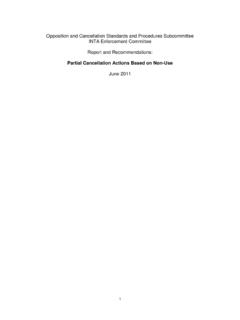



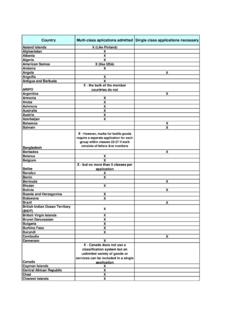
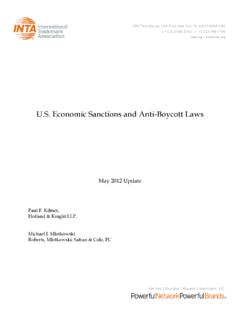
![Super Bowl 53 Charity Raffle Official Rules[4]](/cache/preview/1/1/f/c/6/c/3/4/thumb-11fc6c3481eb277fd1dbcefe6b2dffc8.jpg)



